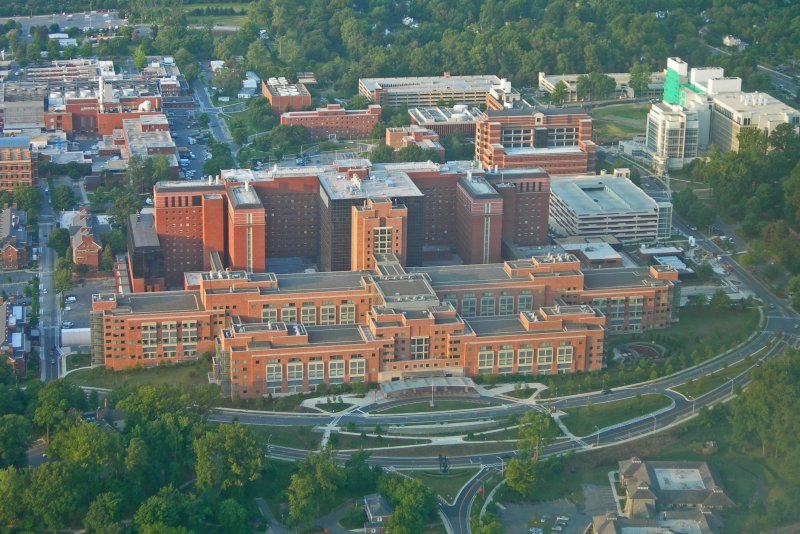An aerial photograph of the National Institutes of Health Clinical Center in Bethesda, Md. Photo courtesy NIH
BETHESDA, Md., June 8 (UPI) -- The National Institutes of Health said it is treating a patient with a rare, "extensively drug-resistant" form of tuberculosis and health officials are now seeking hundreds of people she may have come into contact with prior to treatment.
In a statement to UPI, the NIH said the patient, whose name and age weren't revealed for privacy concerns, was transferred by air and ground ambulances from Chicago to its facility outside Washington, D.C., on Friday.
She was diagnosed with the XDR-TB form of the disease, meaning it is multidrug-resistant and expensive to treat, the U.S. Centers for Disease Control and Prevention website says.
"The patient is staying in an isolation room in the NIH Clinical Center specifically designed for handling patients with respiratory infections, including XDR-TB," the NIH said. "The National Institute of Allergy and Infectious Diseases (NIAID), part of the NIH, is providing care and treatment for the patient in connection with an existing NIH clinical protocol for treating TB, including XDR forms. NIAID has treated other XDR-TB patients in the past under this protocol."
The CDC said the patient traveled extensively in the weeks before she was diagnosed with the disease -- including a trip to India -- and they are seeking people who may have come into contact with her.
"The patient also spent time in Missouri and Tennessee. Seven weeks after arriving in the United States, the patient sought treatment for and was diagnosed with active TB," the CDC said in a statement provided to NBC News.
The woman received treatment at a suburban Chicago hospital before she was transported to the NIH facility.
"Besides concerns about community contacts, the patient flew from India to the United States. CDC will obtain the passenger manifest for that flight from the airline and will begin a contact investigation. Although the risk of getting a contagious disease on an airplane is low, public health officers sometimes need to find and alert travelers who may have been exposed to an ill passenger," the CDC said.
A total of 63 cases of XDR-TB were reported in the United States between 1993 and 2011, with about a 30 percent to 40 percent chance of full cure. The symptoms of the disease include weakness, weight loss, fever, coughing, chest pain and coughing up blood.















